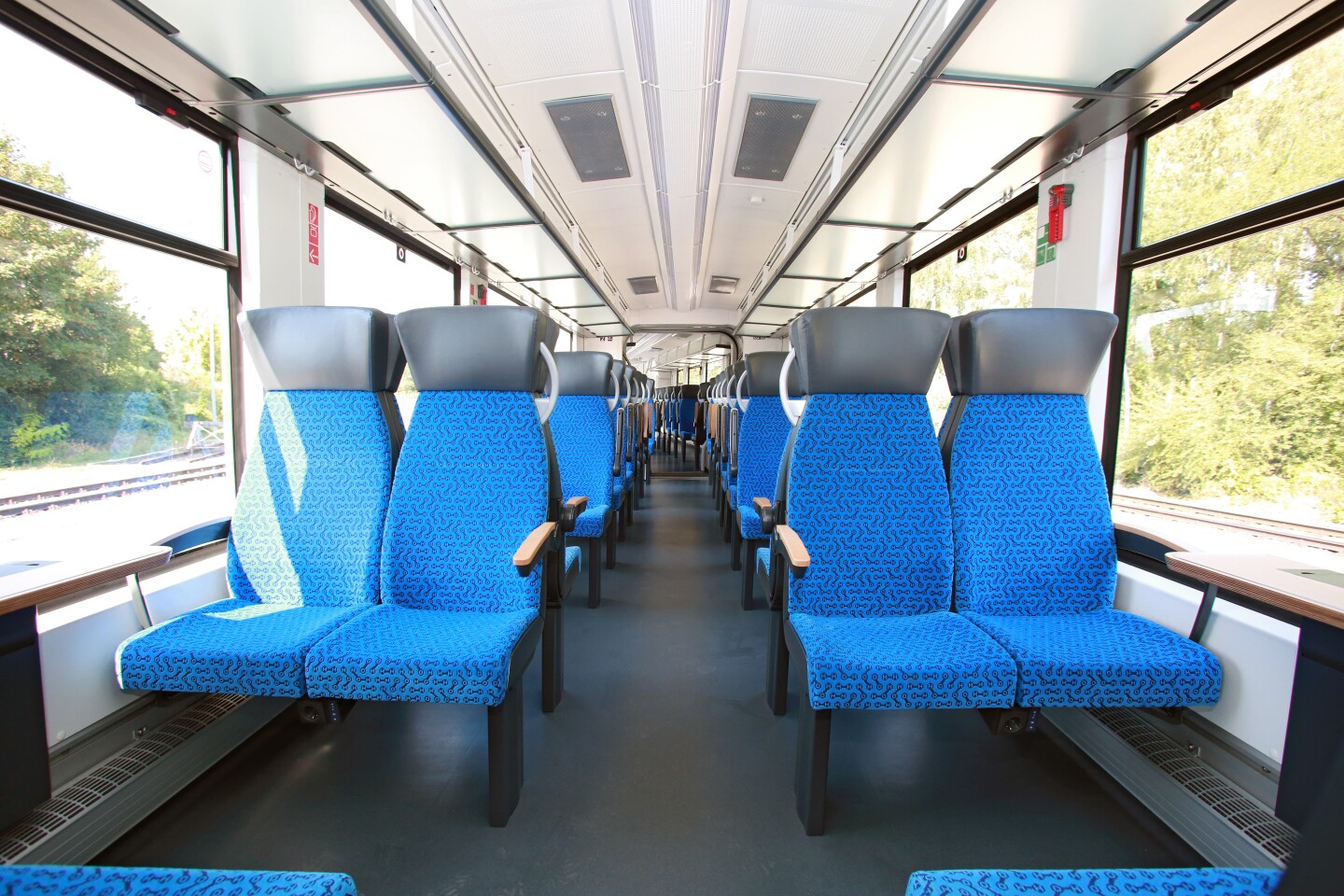The world's first hydrogen fuel cell-powered train entered regular service on Monday in Germany as a two-car Alstom Coradia iLint took to the tracks on Eisenbahnen und Verkehrsbetriebe Elbe-Weser's (EVB) Elbe-Weser network in Lower Saxony. Unveiled on Sunday before government and industry dignitaries at Bremervörde, the new Coradia iLint will be first of two in a growing network of quiet, zero-emission trains operating on Germany's railways.
Electric trains are very useful on crowded railway lines and offer emission-free services at the point of use, but it isn't practical to electrify every line except in the smallest or most concentrated of networks. The result is that many long-haul or underused rural lines have to rely on diesels to haul passengers and goods.
To close the circle, Alstom built the first two Coradia iLint in Salzgitter, Germany as part of an €81 million (US$94.5 million) contract to create an initial fleet of 16 hydrogen-powered trains. The Coradia iLint is is based on Alstom's diesel-powered Coradia Lint 54 and is powered by hydrogen fuel cells backed up by banks of lithium ion batteries that store excess electricity. It carries up to 300 passengers with seats for 150, boasts a top speed of 140 km/h (87 mph) and has acceleration and braking performances comparable to the Lint 54.

Currently, the hydrogen-powered trains are being run on behalf of the German regional rail authority Landesnahverkehrsgesellschaft Niedersachsen (LNVG) over 100 km (62 mi) of track between Cuxhaven, Bremerhaven, Bremervörde and Buxtehude in place of the conventional diesel vehicles.
In between runs, the Coradia iLints will be fueled by a mobile hydrogen filling station consisting of a 40-ft-tall (12-m) steel hydrogen gas container that will be parked by the tracks at Bremervörde station. Each fill will run one train for 1,000 km (620 mi), and according to Alstom the mobile container will be replaced by a permanent filling station in 2021 when the balance of the fleet is scheduled to enter service.
"With the two Coradia iLint trains and with the use of another 14 hydrogen trains from the end of 2021, we are the first passenger rail transport authority to replace existing diesel vehicles by emission-free vehicles, thus contributing better to the fulfillment of the climate protection goals." says LLNVG chief Carmen Schwabl. "We also do this because about 120 diesel train sets in our vehicle pool will reach the end of their lifetime within the next 30 years, meaning we will have to replace them. The experience gained with this project helps us find a sustainable and practical solution."
Source: Alstom



















